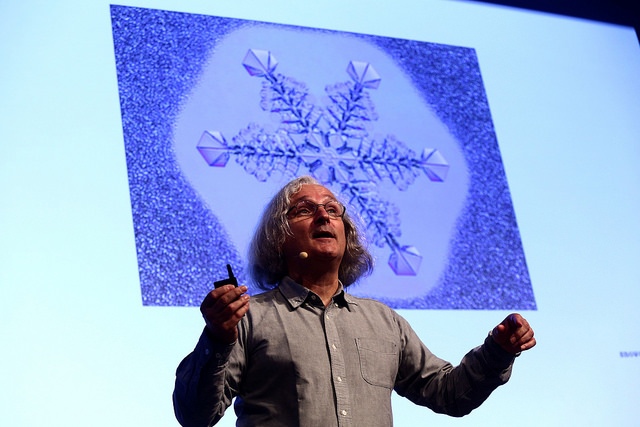August 2, 2018, 6:26 pm

“What do all Brazilians desire most in their wildest dreams?” Asked Étienne Ghys, French mathematician and researcher at the National Institute for Pure and Applied Mathematics (IMPA) in Rio de Janeiro.
Perhaps little reticent to give away their private desires, the rapt crowd of Brazilian Mathematical Olympiad medal winners remained silent, as Étienne played a clip from the 1980 film, ‘Bye Bye Brasil’, to reveal the answer.
Read more:
In it, the conjurer ‘Lord Gypsy, Master of Dreams’ asks the same question to a packed theatre house in the scorching dry heat of northern Brazil. “Profits and progress!” Replies a man in the front row. “To live forever?” posits another.
It turned out to be for it to snow in Brazil, just like in “all the civilized countries in the world” such as “Switzerland.. Germany.. France and England”, in a flash, the audience are deluged. The magic man had made it snow in the tropics.
Étienne apologised that couldn’t quite do the same in the lecture hall at Riocentro, but he did deliver a fascinating hour on the history and geometry of snowflakes at the first public lecture at the ICM 2018. The audience were treated to a blizzard of images, histories and scientific discoveries all about our understanding (and lack of it) of the formation of snowflakes and the heroes who have illuminated this area of study. Unfortunately, however, there are no heroines in this story just yet.
Starting with the Swedish writer, Oluf Magnus, and his 16th century book on ‘the peoples of the north’, which contained the first known images of snowflakes and their formations, Étienne took us on a journey through time explaining how we have come to understand what we now know about this most beautiful of natural phenomena.
Next, was German mathematician Johannes Kepler, whose life’s work was all about understanding nature through math and symmetry. He was the first to notice that all snowflakes have six points and point out the relationship with the hexagonal structure of beehives and the symmetry of the 6th order. Keppler had imagined the molecular structure even though humans were centuries away from discovering that he was right.

Then, at the end of the 19th century, came the artist Wilson Bentley, who devoted himself to photographing snowflakes at his home in Vermont, USA. The audience oohed and aahed in delight at the sheer beauty as we were treated to some of the millions of images Bentley captured over a lifetime.
The physicists, William Bragg and Linus Pauling, discovered the hexagonal molecular structure of ice at the turn of the 20th century, exactly as Keppler had predicted 400 years earlier. Ukichiro Nakaya is credited as being the first person to create artificial snowflakes in his laboratory in Japan. He discovered that different forms of crystals are created at differing levels of temperature and humidity and are therefore like hieroglyphs from the clouds, as their structures allow you to understand the conditions in which they were created. Physicists, to this day, still don’t know why this is.
Étienne then explained how snowflakes are formed, before paying tribute to physicist, Norman Packard and mathematicians, Cliff Reitner, Janko Gravner and David Griffeath, who created and defined mathematical models for snowflake formation. The latter two created a program which generated realistic snowflake simulations they called ‘snowfakes’.
Finally, we learnt how the world’s greatest living snowflake expert, Kenneth Libbrecht, spent 15 years creating and photographing snowflake formations.
Ending with a nod to the future, Étienne reminded the young mathematicians in front of him how much there is still to discover on the subject.
Then told them of his own private dream.
“I, Étienne, would like so much to be the ‘master of dreams’ and of the clouds and the snow. But unfortunately, I’m not.” He lamented. “But I can dream. I dream that one day a medallist in this room will continue and complete this research. And the dream would be even more beautiful if it was to be a woman.”
Maybe Étienne’s dream will indeed come true. The young mathematicians in the crowd were clearly animated and inspired by the Frenchman and stayed behind to ask a whole series of questions.

“He managed to take something quite ordinary, at least in some countries, and explain the knowledge and mathematics behind it,” enthused Mattheus Henrique from the capital, Brasilia. “He showed us math is everywhere, whether it’s in nature or in our daily lives.”
Maybe Amanda Perez from Londrina in the south of Brazil could turn out to be the one to realize Étienne’s dream. Her twin loves of mathematics and physics are both involved in the study of snowflakes which still requires much more understanding. “It’s such an open question,” she said. “This means we can develop further research in this area, to discover more about it all.”